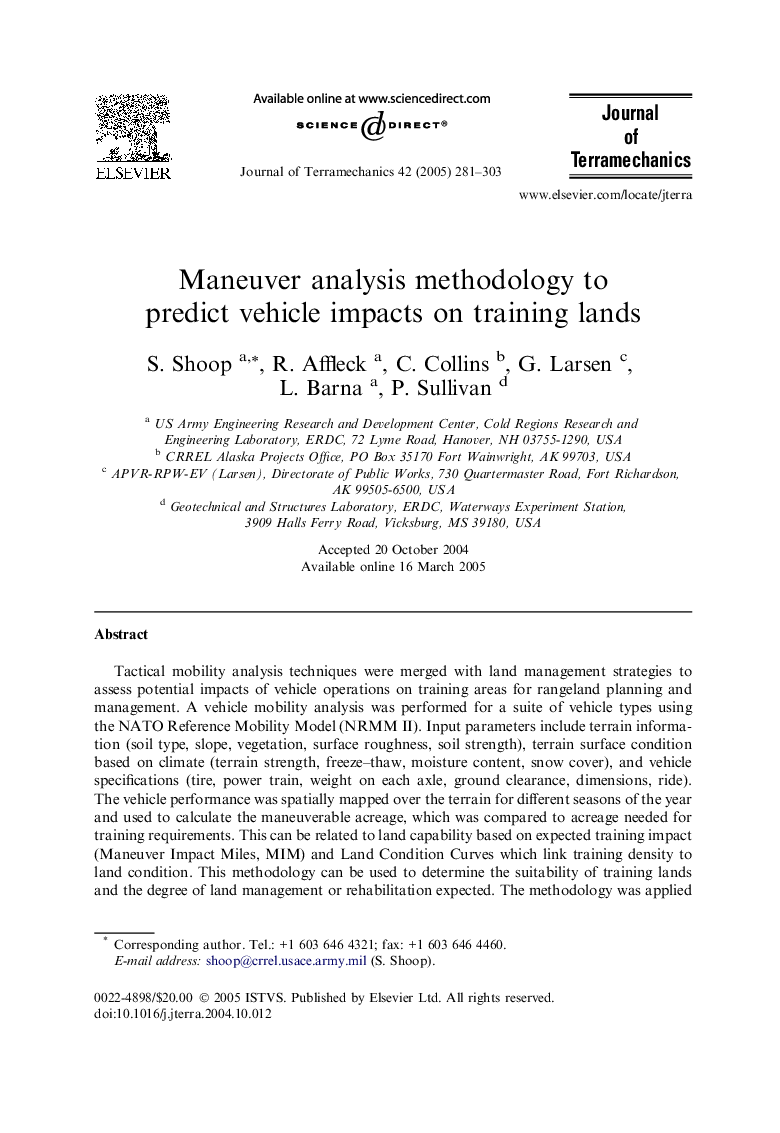| Article ID | Journal | Published Year | Pages | File Type |
|---|---|---|---|---|
| 9711564 | Journal of Terramechanics | 2005 | 23 Pages |
Abstract
Tactical mobility analysis techniques were merged with land management strategies to assess potential impacts of vehicle operations on training areas for rangeland planning and management. A vehicle mobility analysis was performed for a suite of vehicle types using the NATO Reference Mobility Model (NRMM II). Input parameters include terrain information (soil type, slope, vegetation, surface roughness, soil strength), terrain surface condition based on climate (terrain strength, freeze-thaw, moisture content, snow cover), and vehicle specifications (tire, power train, weight on each axle, ground clearance, dimensions, ride). The vehicle performance was spatially mapped over the terrain for different seasons of the year and used to calculate the maneuverable acreage, which was compared to acreage needed for training requirements. This can be related to land capability based on expected training impact (Maneuver Impact Miles, MIM) and Land Condition Curves which link training density to land condition. This methodology can be used to determine the suitability of training lands and the degree of land management or rehabilitation expected. The methodology was applied to the transformation of the Alaska training lands to support a new brigade unit called the Stryker Brigade Combat Team (SBCT3), but is equally useful for other training areas and military units. For summer use, Alaska training lands are capable of supporting four times the projected training requirements. For winter, when the ground is frozen, more than 10 times the area needed was available.
Related Topics
Physical Sciences and Engineering
Earth and Planetary Sciences
Geotechnical Engineering and Engineering Geology
Authors
S. Shoop, R. Affleck, C. Collins, G. Larsen, L. Barna, P. Sullivan,
